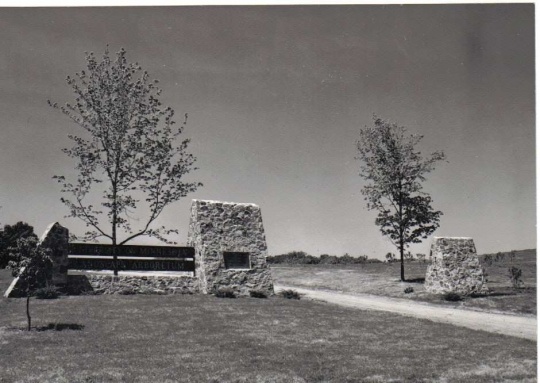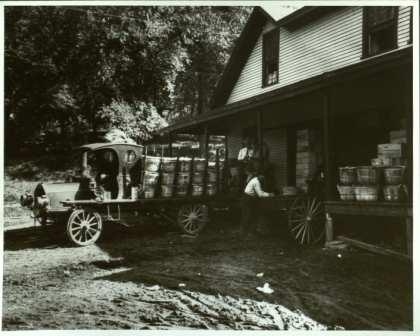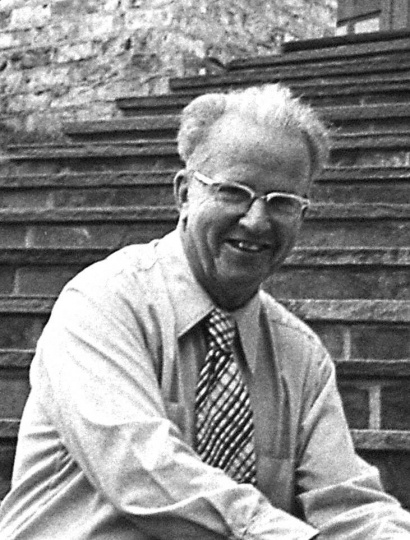The University of Minnesota Landscape Arboretum is the state's largest, most diverse and complete horticultural site. The grounds have more than five thousand types of plants, including fruits, vegetables, bushes and flowers. Located about twenty miles west of the Twin Cities, it is a significant horticultural resource.
The history of the Landscape Arboretum begins with Peter Miller Gideon. He established a homestead and apple orchard on the shores of Lake Minnetonka in 1853. The orchard started with thirty apple varieties, but the harsh Minnesota winters and hot summers killed most of them.
By his tenth year on the farm, in 1868, only one seedling survived. However, Gideon was determined. He sent his last eight dollars to Maine for more seeds. Gideon crossed the large apple seeds he received with a hardy local crab apple to create a new apple, the "Wealthy". This fruit survived Minnesota's extreme weather, and was the foundation for apple growing in Minnesota. The Wealthy's success led to the Minnesota State Legislature's approval of state-funded experimentation in breeding new fruit varieties.
In March 1878, the Minnesota State Horticultural Society, using state funds, started the Minnetonka Fruit Farm on 116 acres next to Gideon's farm. Gideon was in charge of the fruit farm until his retirement in 1889. That farm was then sold, but new research opportunities were available. In 1883, the Minnesota State Horticultural Society established a series of research stations. These stations were for creation and testing of other new varieties of fruits and vegetables.
In 1907, the Horticultural Society successfully petitioned for a new fruit breeding and testing farm to be part of the University of Minnesota's Horticulture Department. The farm began on seventy-eight acres purchased five miles west of Excelsior. More land was bought in 1920 and 1931, for a total of 230 acres. Planting began with extra seeds and plants from the experiment stations and donations by farmers. By 1912, sixty-five acres were planted and thriving on the Fruit Breeding Farm.
The first new fruit variety, the Latham raspberry, was introduced by 1914. By 1923, twenty-nine new varieties were being enjoyed. Despite this early success, the farm faced yearly money and weather problems. Droughts, floods and extreme cold or heat caused problems for plants. Money problems were addressed by using Works Progress Administration workers during the Depression in the 1930s. The farm also collaborated with the U.S. Department of Agriculture (USDA) and the National Fruit Breeding Program in 1938. This partnership brought USDA field agents to work on the farm and money to pay for their labor part-time.
The Fruit Breeding Farm continued to grow and produce new hardier fruit varieties. Between 1919 and 1953, sixty-two new varieties came out. Among the better known were the "Fireside" and "Haralson" apples, the "Northstar" cherry, and the "Superior" plum. The "Haralson" was very successful. It has provided more income than any other Minnesota apple variety. In 2005 Haralsons made up over fifty percent of all Minnesota apple production.
The farm had many leaders over the years. Between 1953 and 1970, Dr. Leon C. Snyder was in charge. He was interested in planting for landscapes. He first planted shrubs and trees around his home on the farm, and then later planted in the farm's open fields. In 1954, Snyder started the Woody Landscape Breeding Program. Over 600 varieties of trees and shrubs were planted by 1955.
Snyder dreamed of an outdoor laboratory to create new plants and an outdoor living classroom for students. Soon after, in 1958, land was purchased by the University of Minnesota for a Landscape Arboretum. In 1967, the Fruit Breeding Farm became the Horticultural Research Center (HRC), growing more than just fruit. In 1987, the HRC and the Minnesota Landscape Arboretum were merged administratively as one program, or department, by the University of Minnesota.









